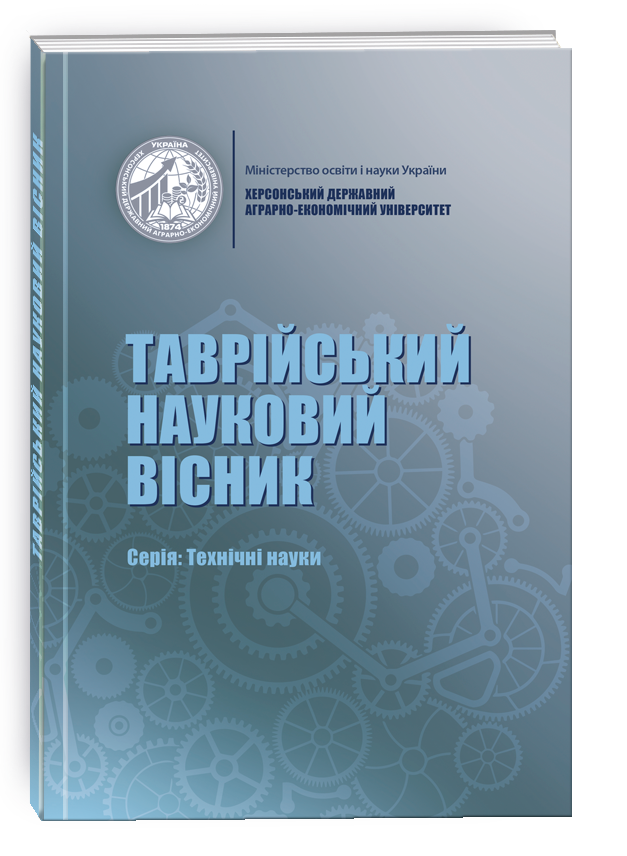ISOLATION OF ANTHOCYANINS (PIGMENTS) BY THE METHOD OF OPTIMAL SELECTION OF CLITORIA TERNATEA EXTRACTION
DOI:
https://doi.org/10.32851/tnv-tech.2022.2.4Keywords:
food coloring, clitoral triplet, anthocyanins, blue anchan tea, extraction.Abstract
Food dyes belong to the group of food additives. Natural dyes have been used for centuries to improve the appearance of food. But in the twentieth century, stable artificial dyes appeared, which gradually began to displace natural ones. The advantages of their use are cheapness, small dosages, resistance to temperature, light, changes in pH, obtaining different shades by mixing. Moreover, most artificial food dyes contain azo compounds, such dyes are not on the list of permitted food additives in Ukraine. However, the range of natural dyes is very small, so there is a need to find promising natural analogues of vegetable raw materials. The paper shows the long-term feasibility of use in the food industry as a dye – сlitoria ternatea (Clitoria ternatea L.) A special place among the biologically active substances in the plant material of сlitoria ternatea, occupy anthocyanin dyes of phenolic nature, which belong to bioflavonoids. They determine the color of flowers from light blue to dark blue. Anthocyanins of flowers (Clitoria ternatea L.), easily soluble in water and can be used as a dark blue food coloring in acidic and neutral foods, to restore and increase the intensity of natural color, coloring colorless products and give them an attractive appearance. On the basis of the conducted researches the optimum conditions of extraction of a pigment of a vegetable origin from a clitoral ternary by an extraction method are revealed. The most optimal mode of extraction of substances occurs at a temperature of 73.1 °C, time 45 minutes, hydraulic modules 1: 303. Accordingly, based on three different methods, you can develop your own optimal method of extraction, taking into account such factors as temperature, time, hydromodule.
References
Dilrukshi P. G. T., Munasinghe H., Silva A. B. G., De Silva P. G. S. M. Identification of synthetic food colours in selected confectioneries and beverages in jaffna District, Sri Lanka. J. Food Qual. 2019.
Sen T., Barrow C. J., Deshmukh S. K. Microbial pigments in the food industry – challenges and the way forward. Front. Nutr. 6:7. 2019.
Feketea G., Tsabouri S. Common food colorants and allergic reactions in children: myth or reality? Food Chem. 2017. P. 578–588.
Salacheep S., Kasemsiri P., Pongsa U., Okhawilai M., Chindaprasirt P., Hiziroglu S. Optimization of ultrasound-assisted extraction of anthocyanins and bioactive compounds from butterfly pea petals using Taguchi method and Grey relational analysis. J. Food Sci. Technol. 2020. Vol. 57. P. 3720–3730.
Abidin Z. H. Z., Manah N. S. A., Hadi A. N., Saugi N. S., Fuad F. A., Mazni N. A., et al. The colour stability of natural blue dye extracted from Clitoria ternatea L. Pigment Resin Technol. 2019. Vol. 48. P. 265–271.
Thuy N. M., Minh V. Q., Ben T. C., Thi Nguyen M. T., Ha H. T. N., Tai N. V. Identification of anthocyanin compounds in butterfly pea flowers (Clitoria ternatea L.) by ultra performance liquid chromatography/ultraviolet coupled to mass spectrometry. Molecules. 2021.
Marpaung A. M., Lee M., Kartawiria I. S. The development of butterfly pea (Clitoria ternatea) flower powder drink by co-crystallization. Indone Food Sci. Technol. J. 2020. Vol. 3. P. 34–37.
Microbial Pigments in the Food Industry—Challenges and the Way Forward Tanuka Sen, Colin J. Barrow, and Sunil Kumar Deshmukh 2019; 6: 7. DOI: 10.3389/fnut.2019.00007
Крижак Л. Антоціани із квітів Сlitoria ternatea. Вісник Хмельницького національного університету. Хмельницький, 2022. № 1(305) С. 270–273.
Houghton A. Appelhagen I. Martin C. Natural Blues: Structure Meets Function in Anthocyanins. 2021. 10(4), 726; DOI: org/10.3390/plants10040726
Khoo, Hock Eng & Azlan, Azrina & Tang, Sou & Lim, See. Anthocyanidins and anthocyanins: Colored pigments as food, pharmaceutical ingredients. Food & Nutrition Research. 2017. No. 61. 1361779. DOI: 10.1080/16546628.2017.1361779
Jeyaraj E. J., Lim Y. Y., Choo W. S. Extraction methods of butterfly pea (Clitoria ternatea) flower and biological activities of its phytochemicals. J. Food Sci. Technol. 2020. Vol. 58. P. 2054–2067.
Pham T. N., Nguyen D. C., Lam T. D., Van Thinh P., Le X. T., Nguyen D. V. V., et al. “Extraction of anthocyanins from Butterfly pea (Clitoria ternatea L. Flowers). International Conference on Mechanical Engineering. (Bristol: Iop Publishing Ltd). 2019.
Jaafar N. F., Ramli M. E., Salleh R. M. Optimum extraction condition of Clitorea ternatea flower on antioxidant activities, total phenolic, total flavonoid and total anthocyanin contents. Trop. Life Sci. Res. 2020. Vol. 31. 1–17.
Shen Y., Ardoin R., Osorio L. F., Cardona J., López Prado A. S., Osorio L. F., et al. Effects of different solvents on total phenolic and total anthocyanin contents of Clitoria ternatea L. petal and their anti-cholesterol oxidation capabilities. Int. J. Food Sci. Technol. 2019.
Chemat F., Abert Vian M., Ravi H. K., Khadhraoui B., Hilali S., Perino S., et al. Review of alternative solvents for green extraction. Molecules. 2019.
АРА Hassan, N. D., Muhamad, I. I., & Sarmidi, M. R. The Effect of Copigmentation on the Stability of Butterfly Pea Anthocyanins. Key Engineering Materials. 2013. Р. 245–249. URL: https://doi.org/10.4028/www.scientific.net/kem.594-595.245
Baskaran, A., Mudalib, S. K. A. Optimization of aqueou sextra ctionofb lue dyefrombutter fly peaflower Journal of Physics Conference Series. November 2019. DOI:10.1088/1742-6596/1358/1/012001. URL: https://www.researchgate.net/ publication/337130513_Optimization_of_aqueous_extraction_of_blue_dye_from_ butterfly_pea_flower







